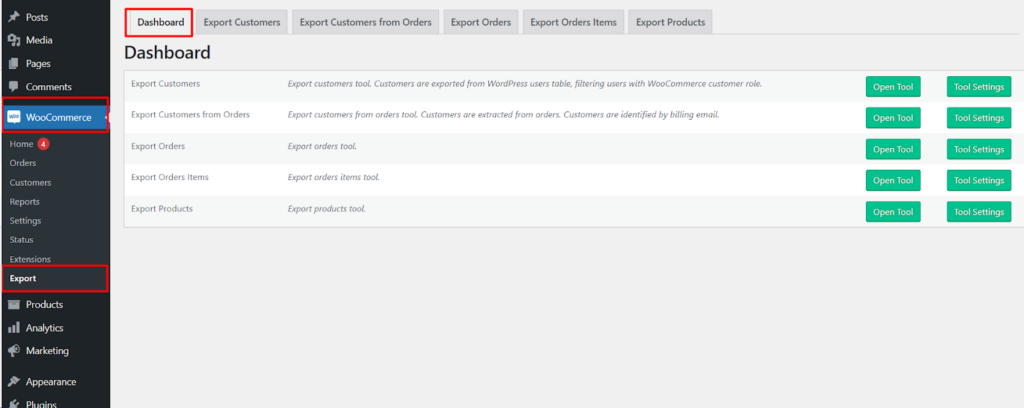Managing an online store requires keeping track of a wealth of information. Here’s a comprehensive guide to exporting various data sets from your WooCommerce store, empowering you to analyze trends, generate reports, and streamline your business operations.
Accessing the Export Tools
- Navigate to your WordPress dashboard.
- Go to WooCommerce > Settings > Export.
Unveiling the Export Options
The Export section within WooCommerce provides a robust set of tools, each dedicated to exporting a specific data category
- Export Customers: This tool allows you to export information about your customers, including their names, email addresses, billing and shipping details, user roles, and purchase history. Customers are filtered from the WordPress users table based on their WooCommerce customer role.
- Export Customers from Orders: This tool focuses on customer data specifically associated with orders placed in your store. It extracts information based on billing email addresses, enabling you to understand customer purchase behavior and identify repeat customers.
- Export Orders: This tool exports comprehensive details about your orders, encompassing order ID, status, date, customer information, items purchased, financial data (order total, taxes, shipping cost), and order notes.
- Export Orders Items: This option allows you to delve deeper into your order data by exporting detailed information for each item purchased within an order. It includes data points like item ID, name, SKU, quantity, tax class, subtotal and total price (both with and without tax), and even meta data associated with the item or its variation.
- Export Products: This tool empowers you to export comprehensive information about your products, covering aspects like product ID, name, SKU, stock levels, prices (regular, sale, etc.), type (simple, variable, etc.), product descriptions (short and long), attributes, image URLs, status, and more.
By mastering the data export features within WooCommerce, you can unlock a wealth of valuable information to optimize your online store’s management and decision-making processes.
